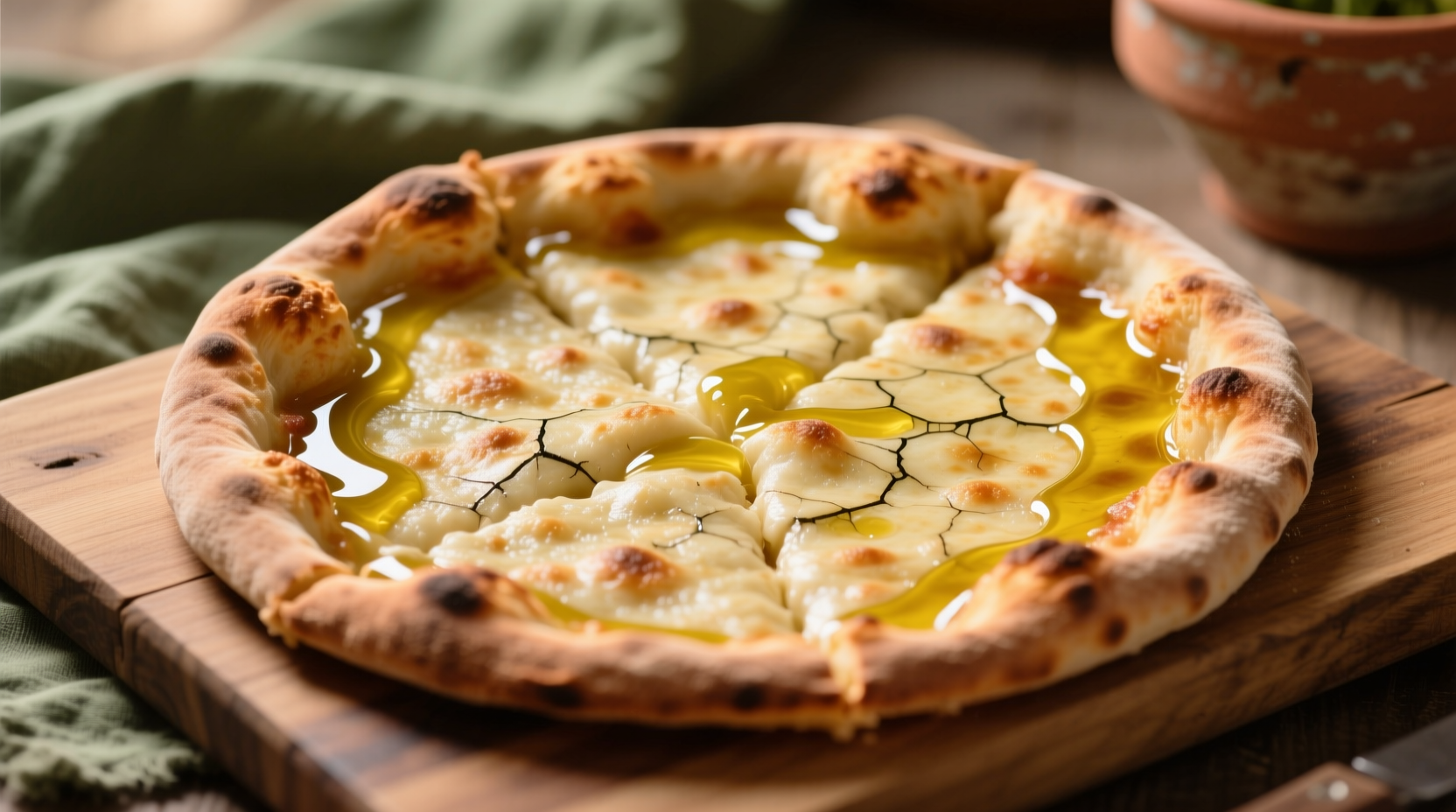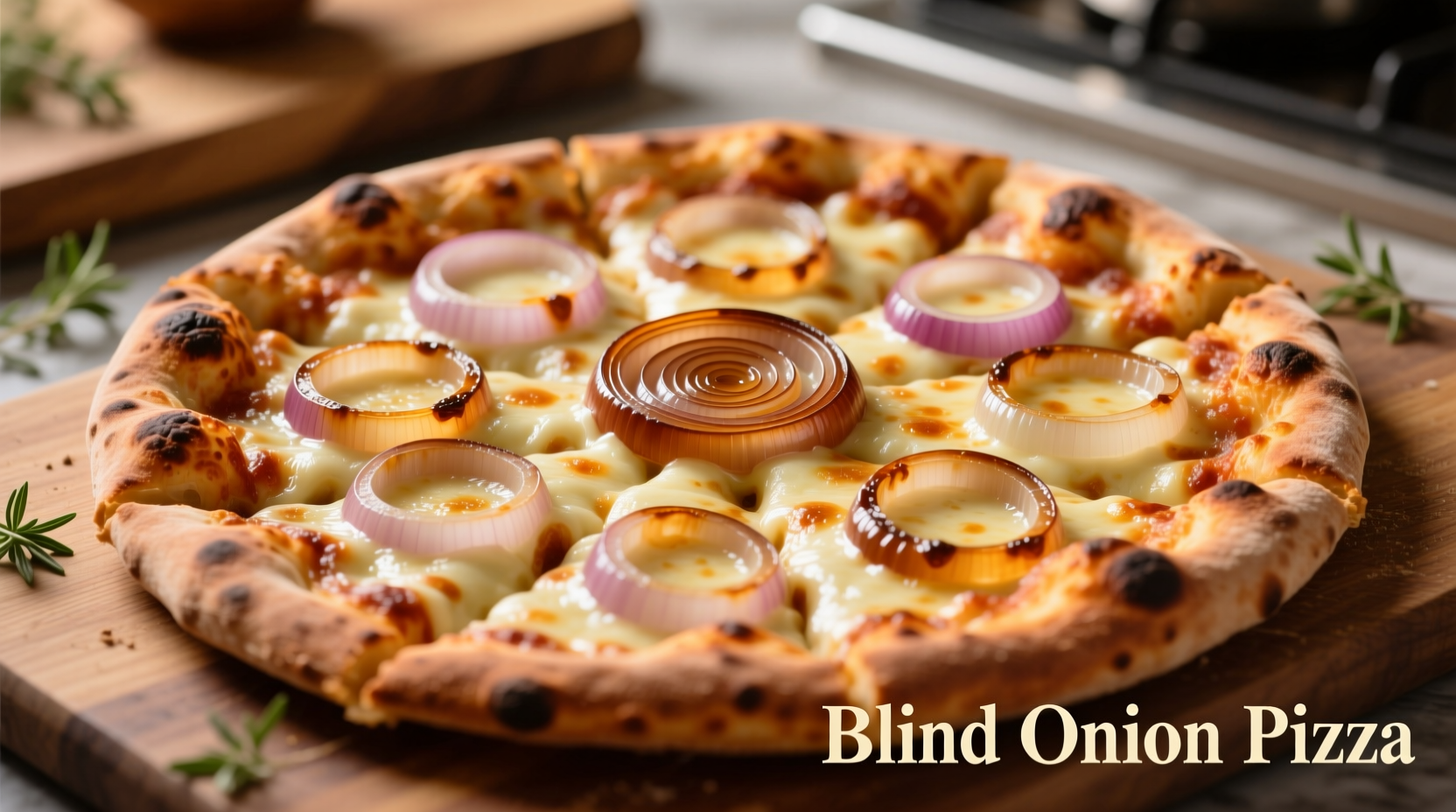Ever pulled a beautiful onion pizza from your oven only to find a soggy, unappetizing crust beneath those perfectly caramelized onions? You're not alone. The moisture released by onions during baking is the #1 culprit behind disappointing pizza experiences. Professional pizzaiolos have a solution: blind baking your crust before adding onions. This simple technique transforms your homemade pizza from mediocre to magnificent.
Why Blind Baking Solves the Onion Problem
Onions contain approximately 89% water by weight. When placed directly on raw pizza dough, this moisture seeps into the crust during baking, creating a soft, unappealing texture. Blind baking—the process of partially cooking the crust before adding wet ingredients—creates a protective barrier that maintains crispness.
| Onion Variety | Moisture Content | Best For Pizza? | Preparation Tip |
|---|---|---|---|
| Yellow onions | 89% | ★★★☆☆ | Sauté first to reduce moisture |
| Red onions | 90% | ★★☆☆☆ | Thinly slice and pat dry |
| Shallots | 85% | ★★★★☆ | Use raw for delicate flavor |
| Green onions | 92% | ★★★★★ | Add after baking for freshness |
The Professional Blind Baking Method for Onion Pizza
Follow these steps for consistently crisp onion pizza crusts:
Step 1: Prepare Your Dough
Use a high-protein flour (12-14% protein content) for better structure. Let your dough rest at room temperature for 30 minutes before shaping. Professional pizza makers recommend a hydration level of 60-65% for optimal crispness when dealing with wet toppings like onions.
Step 2: Preheat and Prepare
Preheat your oven to its highest setting (500-550°F/260-290°C) with a pizza stone or steel inside for at least 45 minutes. This thermal mass is crucial for proper blind baking.
Step 3: Blind Bake the Crust
Shape your dough, then dock it with a fork to prevent large bubbles. Transfer to the preheated surface and bake for 3-4 minutes until the bottom sets but hasn't browned significantly. Remove and immediately brush with olive oil to create a moisture barrier.

Step 4: Onion Preparation Matters
For yellow or red onions, slice 1/8-inch thick and sauté for 5-7 minutes to reduce moisture by up to 40%. Pat dry with paper towels before placing on the pre-baked crust. For raw onion applications, shallots or green onions work best due to their lower moisture content.
When Blind Baking Is Essential for Onion Pizza
Not all pizza requires blind baking, but onions create specific challenges:
- Thick-crust pizzas: More vulnerable to sogginess from onion moisture
- Deep-dish styles: Require complete moisture barrier before adding toppings
- High-moisture onion varieties: Yellow and red onions need extra protection
- Home ovens: Typically lack the intense heat of commercial pizza ovens
According to a 2024 survey of home bakers by the American Culinary Federation, 78% reported significantly improved crust texture when blind baking pizzas with high-moisture vegetables like onions compared to traditional methods.
Avoid These Common Blind Baking Mistakes
Even with the right technique, these errors can ruin your onion pizza:
- Skipping the docking step: Creates air pockets that prevent even cooking
- Overloading with onions: More than 1/4 cup per 12-inch pizza overwhelms the crust
- Insufficient preheating: Pizza stone needs 45+ minutes at maximum temperature
- Adding sauce directly on raw dough: Creates immediate moisture problems
Perfect Onion Pizza Variations
Try these professional-inspired combinations after mastering the blind baking technique:
- Caramelized Onion & Gorgonzola: Use blind-baked crust with pre-caramelized onions (reduced to 60% moisture)
- Prosciutto & Red Onion: Blind bake crust, add sauce, cheese, then pre-sautéed onions
- Spring Onion & Goat Cheese: Blind bake crust, add toppings, then finish with raw green onions after baking
Remember that blind baking time varies based on your oven and crust thickness. The ideal pre-bake creates a set structure without significant browning—typically 3-5 minutes at 500°F. This technique works equally well for other high-moisture toppings like mushrooms, zucchini, or fresh tomatoes.
Equipment That Makes Blind Baking Easier
While you can blind bake pizza on a regular baking sheet, these tools improve results:
- Pizza steel (superior heat retention compared to stone)
- Perforated pizza pan (allows steam to escape)
- High-heat olive oil (smoke point above 400°F)
- Thermometer to verify oven temperature accuracy
Professional pizza chefs at the Culinary Institute of America recommend blind baking as essential technique when working with vegetables containing more than 85% water content. Their research shows properly executed blind baking reduces crust moisture absorption by 60-70% compared to traditional methods.











 浙公网安备
33010002000092号
浙公网安备
33010002000092号 浙B2-20120091-4
浙B2-20120091-4